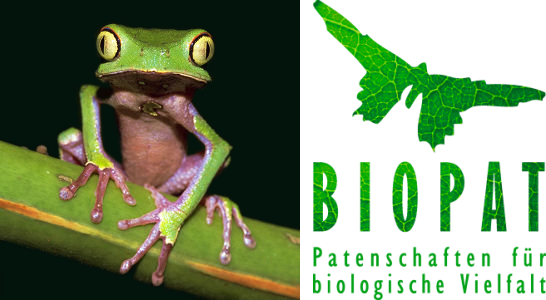Artenkatalog
Catalogue of species
"Drache" aus den Anden Perus
Currently, the iguanian lizards of the genus Enyalioides, possess 15 species distributed from Panama to central Brazil. Commonly known, as Woodlizards, they occupy several environments like lowland tropical rainforests including the Chocó and the western Amazon basin, reaching their major diversity occurring to east of the Andes (73%). With more than 50% of the total number of species described in the last ten years from Ecuador and Peru, woodlizards represent one of the South American lizard groups with the highest species discovery rate (corrected for clade size) in the last decade. This is a striking fact given that woodlizards are among the largest and most colorful lizards in South American tropical forests and is most likely the result of recent fieldwork in poorly explored areas of the central and northern Andes.
This new Enyalioides was discovered in 2011 at the Canyon of the upper Huallaga River in central Peru, between 1500 and 1800 m above sea level. This is an area of montane forest very impacted by the agriculture and cattle ranching, where this species is surviving in patched of secondary forest. Happily, at the same area exist the Bella Durmiente National Park, where this species found one of its last refugee.
Minimum donation requested: 5000 euros.
Nr.: 301

- Gattung / Genus:
Enyaloides - Neuer Art-Name / New species name:
feiruzae - Herkunft / Origin:
Peru - Beschreiber / Describer:
Pablo Venegas
'Dragon' from the Peruvian Andes
Currently, the iguanian lizards of the genus Enyalioides, possess 15 species distributed from Panama to central Brazil. Commonly known, as Woodlizards, they occupy several environments like lowland tropical rainforests including the Chocó and the western Amazon basin, reaching their major diversity occurring to east of the Andes (73%). With more than 50% of the total number of species described in the last ten years from Ecuador and Peru, woodlizards represent one of the South American lizard groups with the highest species discovery rate (corrected for clade size) in the last decade. This is a striking fact given that woodlizards are among the largest and most colorful lizards in South American tropical forests and is most likely the result of recent fieldwork in poorly explored areas of the central and northern Andes.
This new Enyalioides was discovered in 2011 at the Canyon of the upper Huallaga River in central Peru, between 1500 and 1800 m above sea level. This is an area of montane forest very impacted by the agriculture and cattle ranching, where this species is surviving in patched of secondary forest. Happily, at the same area exist the Bella Durmiente National Park, where this species found one of its last refugee.
Minimum donation requested: 5000 euros.
